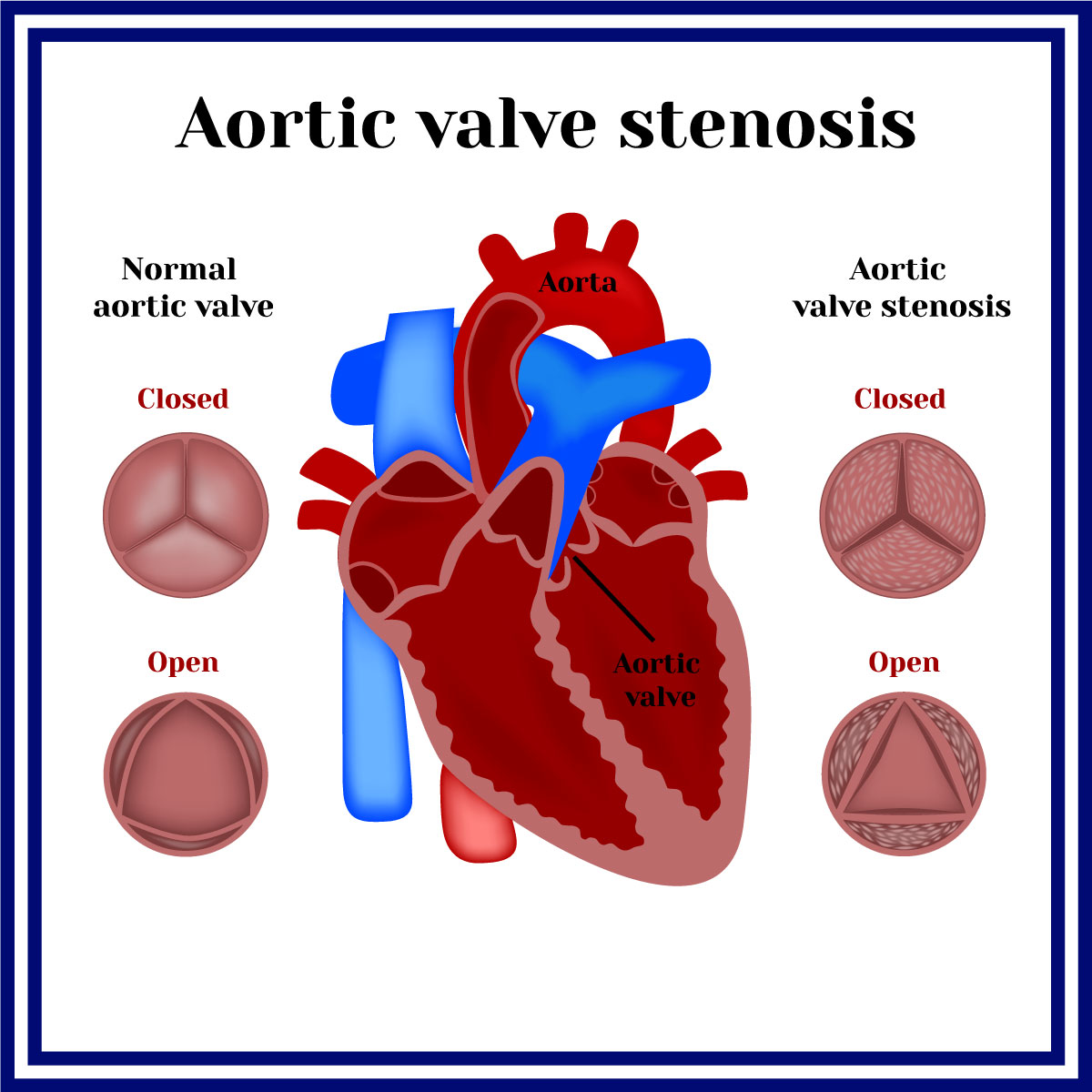
Aortic valve stenosis


Overview
Aortic valve stenosis commonly happens when the aortic valve (located between the lower left heart chamber and aorta) is narrowed or blocked which disrupts the regular flow of blood from the heart to the aorta and the body. The amount of oxygen that is received by the body decreases resulting in symptoms such as chest pain, shortness of breath, or loss of consciousness. Aortic stenosis is more likely to affect adults at the age 65 years old and above and in some cases children may occasionally be born with an aortic valve defect that results in stenosis. A life-threatening condition, such as heart damage, or even death could result from the condition if it is not treated. The severity of aortic stenosis affects how the disease will be treated. Surgery can be required to fix or replace the valve.
Symptoms
Aortic valve stenosis usually progresses from mild to severe. When the valve is severely narrowed, the symptoms begin to occur, but sometimes the symptoms may not appear for years.
Aortic valve stenosis symptoms can include:
- Heart murmur
- Chest pain or chest pressure/tightness
- Fainting, feeling lightheaded, or dizziness with activity
- Shortness of breath
- Fatigue
- Palpitations or rapid heard beat
- Trouble with gaining weight (in children with aortic valve stenosis)
- Trouble with feeding (in children with aortic valve stenosis)
Aortic valve stenosis can cause heart failure. Tiredness, shortness of breath or difficulty of breathing, and swelling of feet and ankles are some signs and symptoms of a heart failure.
Seek medical intervention if the patient is having any signs and symptoms of aortic stenosis.
Causes
The valve separating the aorta from the lower left heart ventricle is temporarily blocked which causes aortic valve stenosis. Narrowing occurs in the passageway where blood leaves the heart and flows to the aorta.
The heart must work harder to pump sufficient blood into the aorta and to the rest of the body when the aortic valve opening is restricted. The left ventricle may thicken and widen due to the overuse of the heart. Over time, the stress may weaken the heart muscle, which may then result in cardiac failure and other severe problems.
Cause of aortic valve stenosis includes:
- Congenital heart defect: Congenital heart defects can provoke experiencing aortic valve stenosis at some point of life. Rather than the typical three distinct cusps, some people are born with aortic valves that have two cusps (bicuspid valve). Unicuspid and quadricuspid valves can occasionally exist, but these are rare cases.
People with bicuspid aortic valve require regular medical examinations. The valve issue might not cause any problem until adulthood. The specialist may recommend replacing or repairing the aortic valve if it starts to narrow or leak. - Rheumatic fever: The damage to the heart valves might result from untreated strep throat. The aortic valve may develop scar tissue that will make the opening of the aortic valve become narrow, or it may become rough, allowing calcium deposits to build up. It can also affect one or more of the heart valves if not treated properly.
- Aortic valve calcification: Blood contains calcium. The heart valves may develop calcium deposits as a result of repeated blood passage over the aortic valve. The calcium deposits can cause the valve cusps to stiffen earlier in life in some persons with congenital aortic valve abnormalities.
Risk factors
Aortic valve stenosis risk factors includes:
- Age: the older person is more like to be affected by the disease.
- Congenital heart disease: some certain heart conditions such as a bicuspid aortic valve could lead to aortic valve stenosis.
- Other disease: high blood pressure, high cholesterol, and diabetes are risk factors. Chronic kidney disease could also lead to aortic valve stenosis.
- Previous infection: past illnesses such as rheumatic fever and infective endocarditis that may have damaged the heart
- History of radiation therapy to the chest
Contact Information
service@vejthani.com






















